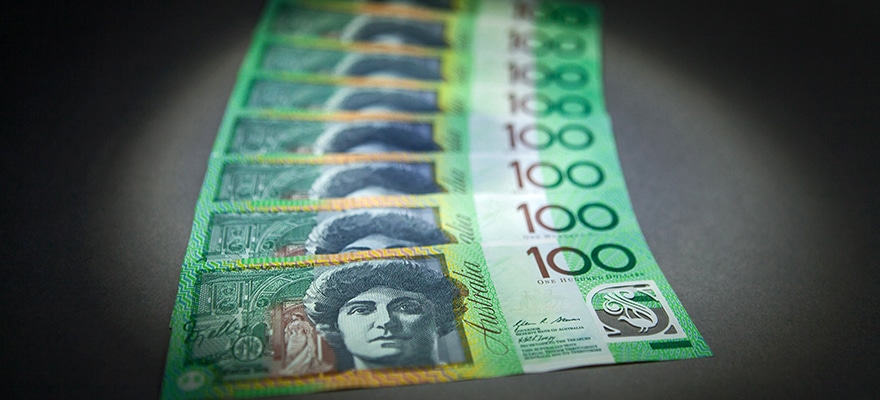The Reserve Bank of Australia has already cut the official cash rate this year by 50 basis points to the current level of 2.00%. Governor Stevens has reiterated on several occasions that further easing is a distinct possibility.
Key Metrics
Overall the Australian economy is fairing quite well, especially when compared to other major commodity exporters such as Canada and New Zealand. The employment situation is stable. The unemployment rate is at its lowest level since June 2014, yet at 6.00% there is still considerable spare capacity in the labour market. We have seen four out of the last five employment releases show jobs added for the month. This is positive. The most recent reading showed 7,300 jobs added for June.
Gross domestic product for the first quarter was solid at 0.9% for the quarter and 2.3% for the year ending March 30. However, many economists expect to see a sharp decline in growth later this year, as mining businesses’ revenues decrease.
Inflation has also been within expectations with the trimmed mean for the second quarter showing 0.6% for the quarter and 2.4% for the year ending June 30. This is within the bank’s target range of 2-3%. Again, this is reasonably positive.
By studying the three key metrics of jobs, growth and inflation there seems to be no indication that the internal economy warrants further easing. However, if we take a step back and look at the bigger picture, factoring external forces, we see a slightly more worrisome situation: China.
Chinese Demand
The behemoth economy of China single-handedly prevented Australia from experiencing a recession during the years after the GFC, during which time most developed nations were in crisis. In fact, the Australian economy has been booming for the last decade on the back of massive demand from China for natural resources. But it must be accepted that this close trade link is a double-edged sword; during times of Chinese growth, millionaires are made in Australia, but when China slows down – especially if it’s a rapid downturn – the country most likely to feel the pain will be Australia.
Already we have seen the waning demand from China translate into weakening commodities prices. Iron ore, Australia’s single largest export, accounting for 21% total exports and around 4% of GDP, has fallen from USD 190 per tonne in 2012 to the current level of USD 51. This fall has wiped off a huge amount from Australia’s GDP, and if the Chinese economy continues to slow then commodities and iron ore will drop even further. It appears that this drop in commodities has not yet had such a disastrous effect on the Australian economy as the tier one data is still stable. It may take more time for these price effects to trickle through the economy and ultimately hit the consumer.
Equity Losses
The recent over-30% decline in the Shanghai Composite has seen trillions wiped off the value of Chinese Equities
Equities
Equities can be characterized as stocks or shares in a company that investors can buy or sell. When you buy a stock, you are in essence buying an equity, becoming a partial owner of shares in a specific company or fund.However, equities do not pay a fixed interest rate, and as such are not considered guaranteed income. As such, equity markets are often associated with risk.When a company issues bonds, it’s taking loans from buyers. When a company offers shares, on the other hand, it’s selling pa
Equities can be characterized as stocks or shares in a company that investors can buy or sell. When you buy a stock, you are in essence buying an equity, becoming a partial owner of shares in a specific company or fund.However, equities do not pay a fixed interest rate, and as such are not considered guaranteed income. As such, equity markets are often associated with risk.When a company issues bonds, it’s taking loans from buyers. When a company offers shares, on the other hand, it’s selling pa
Read this Term. This induced fear across financial markets and further declines are still possible, despite Chinese regulators interventions. One knock-on effect of these losses for Australia may be a reprieve from the overheating housing market. The Chinese are major property investors in Australia where their demand boosts property values in areas such as Sydney and Melbourne. Significant decreases in property investment from China would lower real estate prices.
The massive losses on the Chinese equity markets could mean that many investors will cancel their off-the-plan purchases. The high property prices in Australia have increasingly become an issue for the RBA’s easing cycle as many economists speculate that low interest rates are fuelling a bubble. If a decrease in property demand from China, as a result of stock losses, translates into lower housing prices, then the RBA will have one less issue if and when it comes to another rate cut.
Next Meeting August 4th
At this stage it appears the economy does not warrant further cuts, but the slump in commodities will inevitably affect the economy negatively in the months ahead and the RBA may consider a pre-emptive move, especially if they perceive demand from China decelerating at a faster than anticipated rate.
Bill Evans, Westpac’s chief economist, believes that the RBA won’t cut rates unless the economy really slows down.
The overnight index swap market is currently pricing a 25% probability of a cut at the next meeting on August 4th. We will likely see no cut at the next meeting, but all eyes will turn to the statement to see the RBA’s tone, and whether recent developments in China cause increased dovishness.
The Reserve Bank of Australia has already cut the official cash rate this year by 50 basis points to the current level of 2.00%. Governor Stevens has reiterated on several occasions that further easing is a distinct possibility.
Key Metrics
Overall the Australian economy is fairing quite well, especially when compared to other major commodity exporters such as Canada and New Zealand. The employment situation is stable. The unemployment rate is at its lowest level since June 2014, yet at 6.00% there is still considerable spare capacity in the labour market. We have seen four out of the last five employment releases show jobs added for the month. This is positive. The most recent reading showed 7,300 jobs added for June.
Gross domestic product for the first quarter was solid at 0.9% for the quarter and 2.3% for the year ending March 30. However, many economists expect to see a sharp decline in growth later this year, as mining businesses’ revenues decrease.
Inflation has also been within expectations with the trimmed mean for the second quarter showing 0.6% for the quarter and 2.4% for the year ending June 30. This is within the bank’s target range of 2-3%. Again, this is reasonably positive.
By studying the three key metrics of jobs, growth and inflation there seems to be no indication that the internal economy warrants further easing. However, if we take a step back and look at the bigger picture, factoring external forces, we see a slightly more worrisome situation: China.
Chinese Demand
The behemoth economy of China single-handedly prevented Australia from experiencing a recession during the years after the GFC, during which time most developed nations were in crisis. In fact, the Australian economy has been booming for the last decade on the back of massive demand from China for natural resources. But it must be accepted that this close trade link is a double-edged sword; during times of Chinese growth, millionaires are made in Australia, but when China slows down – especially if it’s a rapid downturn – the country most likely to feel the pain will be Australia.
Already we have seen the waning demand from China translate into weakening commodities prices. Iron ore, Australia’s single largest export, accounting for 21% total exports and around 4% of GDP, has fallen from USD 190 per tonne in 2012 to the current level of USD 51. This fall has wiped off a huge amount from Australia’s GDP, and if the Chinese economy continues to slow then commodities and iron ore will drop even further. It appears that this drop in commodities has not yet had such a disastrous effect on the Australian economy as the tier one data is still stable. It may take more time for these price effects to trickle through the economy and ultimately hit the consumer.
Equity Losses
The recent over-30% decline in the Shanghai Composite has seen trillions wiped off the value of Chinese Equities
Equities
Equities can be characterized as stocks or shares in a company that investors can buy or sell. When you buy a stock, you are in essence buying an equity, becoming a partial owner of shares in a specific company or fund.However, equities do not pay a fixed interest rate, and as such are not considered guaranteed income. As such, equity markets are often associated with risk.When a company issues bonds, it’s taking loans from buyers. When a company offers shares, on the other hand, it’s selling pa
Equities can be characterized as stocks or shares in a company that investors can buy or sell. When you buy a stock, you are in essence buying an equity, becoming a partial owner of shares in a specific company or fund.However, equities do not pay a fixed interest rate, and as such are not considered guaranteed income. As such, equity markets are often associated with risk.When a company issues bonds, it’s taking loans from buyers. When a company offers shares, on the other hand, it’s selling pa
Read this Term. This induced fear across financial markets and further declines are still possible, despite Chinese regulators interventions. One knock-on effect of these losses for Australia may be a reprieve from the overheating housing market. The Chinese are major property investors in Australia where their demand boosts property values in areas such as Sydney and Melbourne. Significant decreases in property investment from China would lower real estate prices.
The massive losses on the Chinese equity markets could mean that many investors will cancel their off-the-plan purchases. The high property prices in Australia have increasingly become an issue for the RBA’s easing cycle as many economists speculate that low interest rates are fuelling a bubble. If a decrease in property demand from China, as a result of stock losses, translates into lower housing prices, then the RBA will have one less issue if and when it comes to another rate cut.
Next Meeting August 4th
At this stage it appears the economy does not warrant further cuts, but the slump in commodities will inevitably affect the economy negatively in the months ahead and the RBA may consider a pre-emptive move, especially if they perceive demand from China decelerating at a faster than anticipated rate.
Bill Evans, Westpac’s chief economist, believes that the RBA won’t cut rates unless the economy really slows down.
The overnight index swap market is currently pricing a 25% probability of a cut at the next meeting on August 4th. We will likely see no cut at the next meeting, but all eyes will turn to the statement to see the RBA’s tone, and whether recent developments in China cause increased dovishness.






















